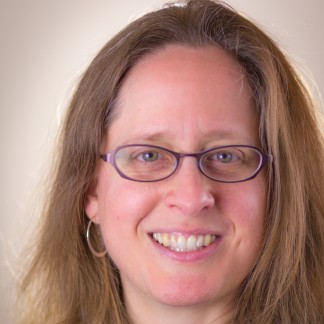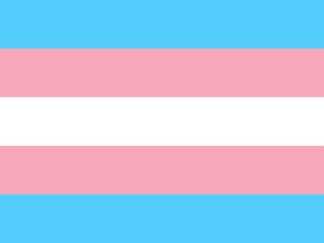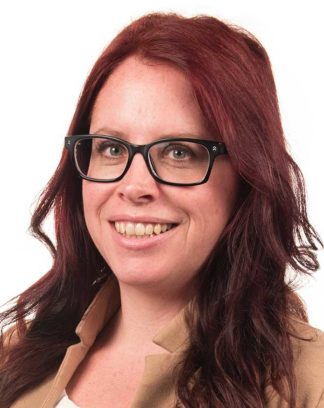By Catherine Arnold
A quick Google search for “transgender movies” can turn up a long list, including the British Film Institute’s list of “10 great transgender films.”
But for researchers from any discipline seeking information about transgender populations, searching databases can be a different story. Researchers may not know appropriate search terms to use or how to make them more inclusive — or how to find re-usable datasets that don’t reveal identities in a vulnerable population.
After seeing a talk on management and access to healthcare data for transgender communities by librarian Reid Boehm, Ph.D., 18 University of Minnesota librarians aimed to make that search easier by creating a transgender guide.
The resulting guide, “Library Resources for Transgender Topics,” includes datasets on health but also education, criminal justice, and other areas. First promoted in September 2019, the guide has been praised by individuals at institutions including Stony Brook University, Children’s National Hospital, Duke University, Allina Health, Cornell University, and Boston Scientific. The University of Vermont’s Dana Medical Library asked to copy the Libraries’ guide and use it.
Promoting efficient research
“The guide provides a valuable consolidation of resources that allows students, faculty, and interested stakeholders to explore credible, vetted, information in an efficient manner,” said Associate Professor Jenifer McGuire — U of M Extension Specialist with a research focus on the health and well-being of transgender youth. “Having this resource page also sends a clear message about the U of M’s institutional values of inclusion, equity, and cultural competency.”
Along with giving positive feedback, she added the guide to her own teaching page.
Sharing with U of M and other researchers
“The Libraries’ expertise lies in locating information and sharing knowledge,” says Shanda Hunt, U of M Public Health Subject Librarian and data curation specialist, who worked on the guide and points out that topic guides are common in libraries. Examples include subjects such as culturally competent care or Native American populations. “When we see a gap for researchers — maybe they’re not sure which terms to use, or where to find shareable data sets — that’s an opportunity for us to make that information more accessible.”
Beyond general LGBTQ data
In databases, trans populations “often get lumped into the LGBTQ group,” notes Hunt. “With the guide, we’re helping to find specific information on trans people without having to weed through lots of unrelated info.”
The guide includes:
- Scholarly journals (such as the International Journal of Transgenderism, and Transgender Health)
- Specialized reference books (Encyclopedia of Gender and Society), databases (including PubMed and GenderWatch)
- Archives and special collections (such as oral history projects from New York, Milwaukee, and Iowa; and the University of Victoria Transgender Archives, in British Columbia)
- Datasets and statistics that include the Social Justice Sexuality Project and the National Transgender Discrimination Survey, with survey results from 24 states
Bringing information to the table
 It was important not to duplicate other campus efforts, says Meghan Lafferty, UMN Chemistry, Chemical Engineering, and Materials Science librarian and Collections Coordinator for Physical Sciences & Engineering. While others at the University are addressing policy needs for the trans community and people interested in the trans community, the Libraries wanted to address community needs “in a way that relates to what we do — helping people find quality information.”
It was important not to duplicate other campus efforts, says Meghan Lafferty, UMN Chemistry, Chemical Engineering, and Materials Science librarian and Collections Coordinator for Physical Sciences & Engineering. While others at the University are addressing policy needs for the trans community and people interested in the trans community, the Libraries wanted to address community needs “in a way that relates to what we do — helping people find quality information.”
How the guide started
In May 2018, the 18 librarians began to brainstorm the audience they wanted their guide to help — determining soon that the gap was for researchers. This included “undergraduate and graduate students, faculty, other researchers at U of M, and researchers elsewhere,” says Lafferty.
“We decided to make a resource that researchers from any discipline would find useful if doing research with transgender populations,” adds Hunt. “We tried to make it interdisciplinary for U of M researchers, but also for others outside the University.”
After sending a short survey to fellow librarians, campus groups, and an off-campus group that began as a trans homicide center, they gathered responses and started.
Something unique: Creating search filters
The librarians tested search terms in various databases, in order to create a number of search “hedges,” or standardized search strategies to help locate relevant articles.
For instance, in a medical database, they tested possible search terms for trans databases and decided on terms that efficiently located data. They created 10 search-filter sets that can be used in databases including psychology, women’s studies, and education.
Bookmark this
“I feel the guide will fill a need and is useful to both existing and new researchers,” says Hunt. “The guide will hopefully help them get one step closer to their research goals.”
Indeed, the project goal was to bring useful material to others. “That’s true of a lot of what we do,” says Lafferty. “We’re trying to make it easier for people to find information they need.”
The U of M’s transgender guide does just that, says Boehm, whose talk prompted the Libraries to create a guide. She bookmarked the guide “as an exemplary resource guide, and will continue to recommend it to researchers and interested individuals.”






